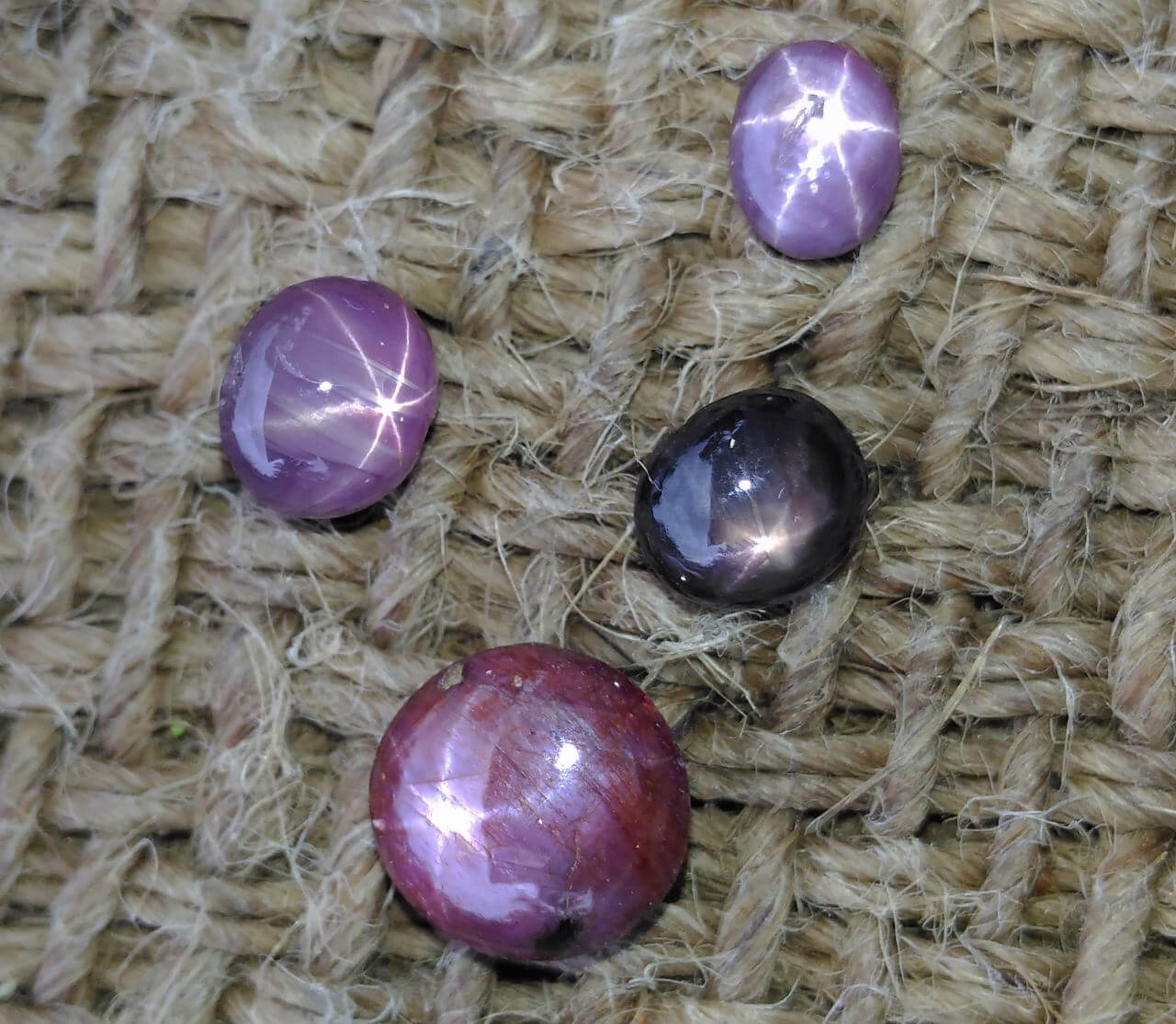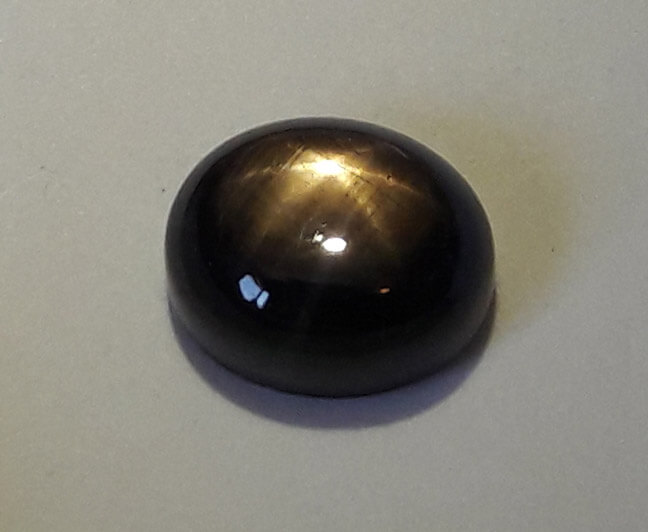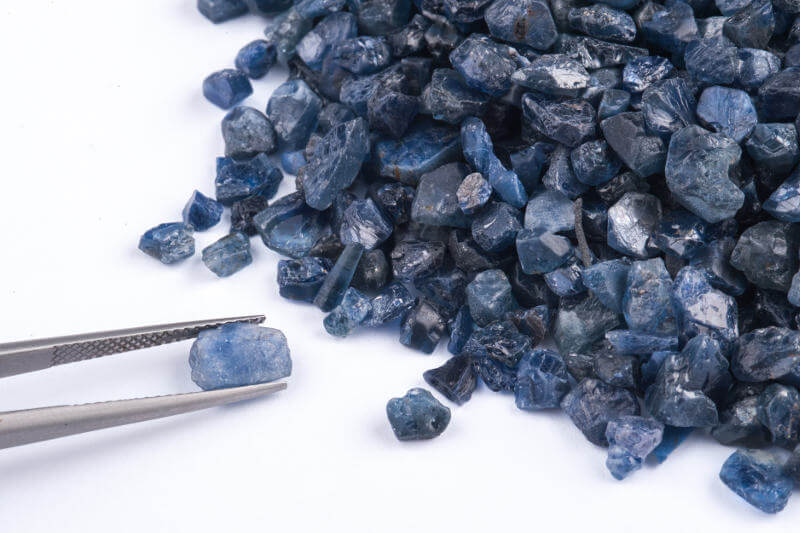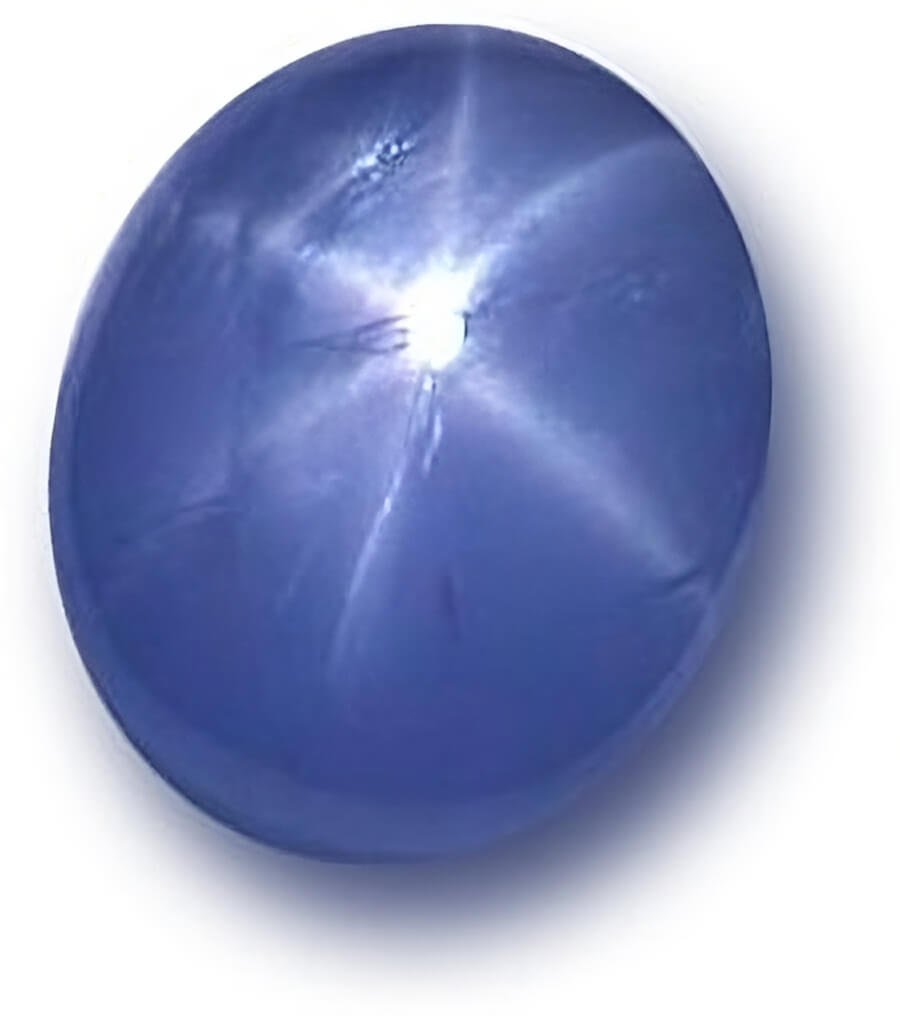Mysterious Star Sapphire - A Guide to Quality and Value
- Home /
- Star Sapphire
Star sapphires, with their enigmatic allure, have captivated the imaginations of people throughout history. These unique gemstones exhibit a star-like phenomenon called asterism, making them highly sought-after and prized for their beauty and symbolism. In this blog post, we will delve into the fascinating world of star sapphires, exploring their properties, colors, sources, and the factors that contribute to their rarity and value. Join us on this journey as we uncover the secrets of these mesmerizing gemstones, and learn all about the star sapphire.
Short Summary
- Star sapphires are highly valued gemstones renowned for their star-like pattern symbolizing dreams, potential, and hope.
- Rarity and value of star sapphires are determined by factors such as color, asterism, clarity, and size with higher clarity increasing worth.
- Caring for a star sapphire includes everyday wear durability considerations as well as cleaning techniques & storage methods to ensure its longevity.
What is a Star Sapphire?
 Star Sapphires
Star Sapphires
A star sapphire is a striking gemstone that is renowned for its asterism - a star-like pattern that appears when light reflects off intersecting needle inclusions. These gemstones come in a variety of colors, such as blue sapphire, pink sapphire, yellow, orange, green, lavender, black, golden star, and even colorless sapphire, each with its own unique appeal and value. Among these captivating gemstones, the serendipity sapphire holds a special allure for many collectors and enthusiasts.
Throughout history, star sapphires have been highly valued, symbolizing dreams, potential, and hope.
The Science Behind Asterism
Asterism in star sapphires can be attributed to the presence of intersecting needle-like impurities, typically the mineral rutile, which is composed mainly of titanium dioxide. These inclusions are responsible for the captivating star-like pattern that has mesmerized people for centuries.
In addition to star sapphires, other gemstones such as star rubies also exhibit asterism. The unique and enchanting beauty of these gemstones lies in the interplay between light and microscopic inclusions within them, creating an extraordinary visual effect that sets them apart from other gemstones.
Variations in Star Patterns
Star sapphires exhibit varying star patterns, with the most common being the six-rayed stars. These captivating patterns are a result of the orientation and arrangement of the rutile inclusions within the stone. However, in some rare cases, star sapphires can display a twelve-rayed star pattern, formed by the presence of two distinct types of inclusions, such as rutile mineral and platelets of hematite.
The rarity of twelve-rayed star sapphires adds to their allure and value. Among most star sapphires, the largest star sapphire ever found, the Star of Adam, weighing a staggering 1,404 carats, exhibits a twelve-rayed star pattern.
These extraordinary natural stones, including the highly sought-after Madagascar sapphire, serve as a testament to the fascinating world of black star sapphires and their captivating patterns.
Exploring the Color Spectrum of Star Sapphires
The color spectrum of star sapphires is vast and varied, ranging from highly sought-after blue and pink hues to rarer colors such as yellow, orange, green, lavender, and black. Each color has its own unique appeal and value, with factors such as asterism, size, and source playing a significant role in determining their desirability.
In the following sections, we will delve deeper into the most desired colors, as well as the rarity and value associated with these enchanting gemstones.
 Black Star
Factor801, CC BY-SA 4.0, via Wikimedia Commons
Black Star
Factor801, CC BY-SA 4.0, via Wikimedia Commons
Most Desired Colors
Blue and pink star sapphires reign supreme as the most sought-after colors in the world of star sapphires. The allure of these colors lies not only in their breathtaking beauty but also in their rarity. Known for their vivid and vibrant blue hue, blue sapphires, especially the blue star sapphires, are highly prized by collectors and enthusiasts alike.
While blue and pink star sapphires are the most desired, other colors such as yellow, orange, and green are also quite rare and can fetch high prices in the market. The scarcity of these colors adds to their mystique, making them highly coveted treasures in the world of gemstones.
Rarity and Value
The rarity and value of star sapphires are determined by factors such as color, asterism, clarity, and size. A star sapphire with a sharp, distinct star, vibrant color, and high clarity is considered highly valuable. Moreover, the rarity of certain colors, such as near-transparent pure blue hues, can significantly increase the value of the gemstone.
As we explore the sources of star sapphires in the next section, we will gain a better understanding of how each location contributes to the unique characteristics and qualities of these fascinating gemstones.
Sourcing and Mining Star Sapphires
 Uncut Blue Sapphires
Uncut Blue Sapphires
Star sapphires are sourced and mined from various countries around the world, including Sri Lanka, Myanmar, Australia, and Thailand, each location producing unique and captivating gemstones. The distinct geological conditions of these regions give rise to the diverse range of colors and patterns found in star sapphires.
In the following subsections, we will delve into the exceptional qualities of Sri Lankan sapphires and explore other notable sources of these alluring gemstones.
Sri Lankan Sapphires
Sri Lanka, affectionately known as the “gem island,” is renowned for producing some of the finest star sapphires in the world, including the exquisite Sri Lankan sapphire. The gem-rich region of Ratnapura is the primary source of these exceptional gemstones, known for their vibrant colors and superior quality. Sri Lankan star sapphires are highly sought-after in the gemstone market, commanding premium prices for their unmatched beauty and rarity.
The vivid colors of Sri Lankan star sapphires can be attributed to the unique geological conditions of the island. The presence of chromium, for example, gives rise to the stunning pink-reddish tones seen in some star sapphires. This natural abundance of high-quality star sapphires makes Sri Lanka a key player in the global gemstone market.
Other Notable Sources
Myanmar, Australia, and Thailand are also noteworthy sources of star sapphires, each offering distinct characteristics and qualities. Myanmar is known for producing deep blue and purple stones, while Australia is famed for its bright yellow and orange star sapphires. Thailand, on the other hand, is renowned for its lighter blue stones.
In addition to these primary sources, star sapphires can also be found in countries such as Canada, Cambodia, India, Madagascar, the United States, Tanzania, Vietnam, Kenya, China, Pakistan, Rwanda, Zimbabwe, and Malawi. The wide variety of sources contributes to the rich diversity of colors, patterns, and qualities found in star sapphires, making them truly remarkable gemstones.
Evaluating Star Sapphire Quality
When it comes to evaluating the quality of a star sapphire, there are several factors to consider, including its asterism, color, clarity, and size. It is also crucial to identify any treatments or synthetic materials, as these can significantly impact the value and desirability of the gemstone.
In the following subsections, we will delve into the key aspects of assessing asterism and identifying treatments and synthetics in star sapphires.
Assessing Asterism
The visibility and centering of the star in a star sapphire play a crucial role in determining its value and appeal. A sharp, distinct star that is well-centered within the stone is highly desirable, as it showcases the unique and captivating asterism that sets star sapphires apart from other gemstones.
When evaluating the quality of a star sapphire’s asterism, it is important to consider the number, position, and size of the needle-like rutile inclusions. These inclusions, when properly oriented within the stone, give rise to the mesmerizing star patterns that have captivated people for centuries.
Identifying Treatments and Synthetics
It is essential to identify any treatments or synthetic materials in star sapphire, as these can significantly impact its value and desirability. Common treatments include heat treatment, dyeing, and lattice-diffusion to enhance color and appearance, while synthetic star sapphires are created by incorporating rutile into the starting powder and heat treatment at high temperatures.
By being aware of these treatments and synthetics, one can make informed decisions when purchasing or investing in star sapphires.
Star Sapphire Symbolism and Healing Properties
Throughout history, star sapphires have been associated with various beliefs, legends, and healing properties. From protection and guidance for ancient travelers to mental clarity and psychic powers in modern healing practices, these gemstones have long been revered for their spiritual significance.
In the following subsections, we will explore the ancient beliefs and legends surrounding star sapphires, as well as their modern healing applications.
Ancient Beliefs and Legends
Ancient cultures held star sapphires in high esteem for their symbolism and spiritual significance. Persian legend suggests that the earth rests upon a giant sapphire, while Greek belief attributed protective powers against poison, envy, and illness to star sapphires. In Christianity, the six-rayed star pattern was seen as a representation of faith, hope, and destiny, earning the gemstone the title of “Stone of Destiny”.
These ancient beliefs and legends showcase the profound impact that star sapphires have had on human culture and spirituality throughout the ages. Their captivating beauty and symbolism continue to inspire awe and reverence to this day.
Modern Healing Applications
In modern times, star sapphires are believed to possess a range of healing properties that can benefit both the body and the mind. Practitioners claim that these gemstones can enhance intuition, emotional balance, and stress relief. They are also thought to possess physical healing properties that can alleviate depression and anxiety, foster creativity, sharpen mental clarity, and stimulate concentration.
In addition to these practical applications, star sapphires are said to have spiritual benefits, such as enhancing clairvoyance, clairaudience, and prophecy, and connecting the user to the Angelic Realms and other Light Beings.
Whether for their symbolic significance or their purported healing properties, star sapphires continue to captivate the hearts and minds of people around the world.
Sapphires and Astrology
Regardless of the above symbols and beliefs that are unique to star sapphires, you may want to read more about sapphires - the birthstone of September.
Caring for Your Star Sapphire
Caring for a star sapphire requires an understanding of its durability, as well as the proper cleaning techniques and storage methods necessary to maintain its beauty and value.
In the following subsections, we will discuss the everyday wear and durability of star sapphires, as well as provide tips for cleaning and storing these precious gemstones.
Everyday Wear and Durability
Star sapphires are among the most durable gemstones. Their hardness is second only to diamonds among naturally occurring gemstones. This makes them suitable for everyday wear; however, care should be taken to avoid damage from harsh chemicals, impacts, or abrasive surfaces. To ensure the secure utilization of star sapphires, it is important to avoid exposing them to harsh chemicals or wearing them in situations where they may be damaged.
Proper star sapphire care also involves taking precautions during the setting and cutting process, as the gemstone can be brittle and susceptible to damage under pressure. By being mindful of these considerations, you can enjoy the beauty and value of your star sapphire for years to come.
Where to Buy Star Sapphires?
Surprisingly, this one is not that easy to answer... I'm reluctant from recommending places I don't trust as it is jewelry, and while the prices of star sapphires are nothing like the prices of diamonds, but still, a lot of money...
For "regular" beautiful high-end and good quality sapphire jewelry my choices are James Allen and Blue Nile. However, they don't carry star sapphires. So after searching around, one of the best locations I could find is actually Etsy. Just look here:
There are more than 5000 options now on their site, you can see the collection here
BUT keep in mind that Etsy is a marketplace. As such, what you are seeing is a wide selection from dozens of sellers. Do your own due diligence to find a jeweler you like and trust.
Cleaning and Storage Tips
To maintain the beauty of your star sapphire, it is important to clean it gently using mild soap and warm water, avoiding harsh chemicals or abrasives. A soft toothbrush can be used to gently clean the surface of the stone, ensuring that its luster and asterism remain intact.
When it comes to storing your star sapphire, it is essential to keep it separate from other gemstones to prevent scratches or damage. Storing your gemstone in a soft cloth or pouch will protect its delicate surface and preserve its beauty and value.
By following these simple tips, you can ensure that your star sapphire remains a cherished and captivating treasure for years to come.
Summary
In this blog post, we have explored the mysterious and captivating world of star sapphires, delving into their unique properties, the various colors and patterns they exhibit, and the factors that contribute to their rarity and value. We have also examined the symbolism and healing properties associated with these gemstones, as well as the proper care and maintenance required to ensure their beauty and value are preserved. Whether you are a collector, enthusiast, or simply someone who appreciates the allure of these mesmerizing gemstones, we hope that you now have a deeper understanding and appreciation for the enigmatic star sapphire.
Frequently Asked Questions
Is star sapphire a real sapphire?
Yes, star sapphire is a real sapphire. It is the same type of stone as regular sapphire with the addition of tiny needles of another mineral that refract light and create its unique reflection, making it both visually stunning and highly valued.
This unique reflection is what makes star sapphire so desirable and valuable. It is a beautiful stone that can be used in jewelry or as a collector.
Why are Star Sapphires so cheap?
Star Sapphires are naturally occurring minerals that have an opaque quality due to the presence of rutile needles. This opacity causes the gemstone to appear cloudy, which results in a lower price.
However, the beauty of the gemstone is still appreciated by many, and it is often used in jewelry and other decorative items. The star sapphire is also believed to have healing properties.
Is a star sapphire natural?
From all the evidence available, it appears that Star Sapphires are naturally occurring gemstones and not artificial creations. The microscopic inclusions found within Star Sapphires form a natural hexagonal pattern, creating a 'star' effect that occurs naturally.
Therefore, it can be concluded that a star sapphire is indeed a natural gemstone.
What causes the star-like pattern in star sapphires?
The distinctive star-like pattern of star sapphires is produced by the reflection of light off the intersecting needle-like inclusions found within the stone, usually composed of titanium dioxide. This creates an optical effect known as asterism, a phenomenon that gives the gemstone its unique and captivating appearance.
What factors determine the value of a star sapphire?
When assessing the value of a star sapphire, the most important factor is the color - saturation, hue, and tone all play an integral role. Clarity, sharpness, and centering of the star are also taken into consideration to determine the value of the gemstone.


